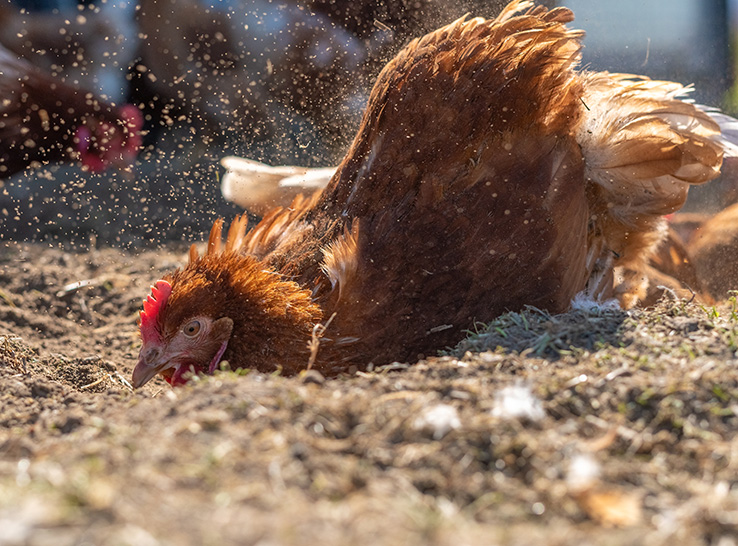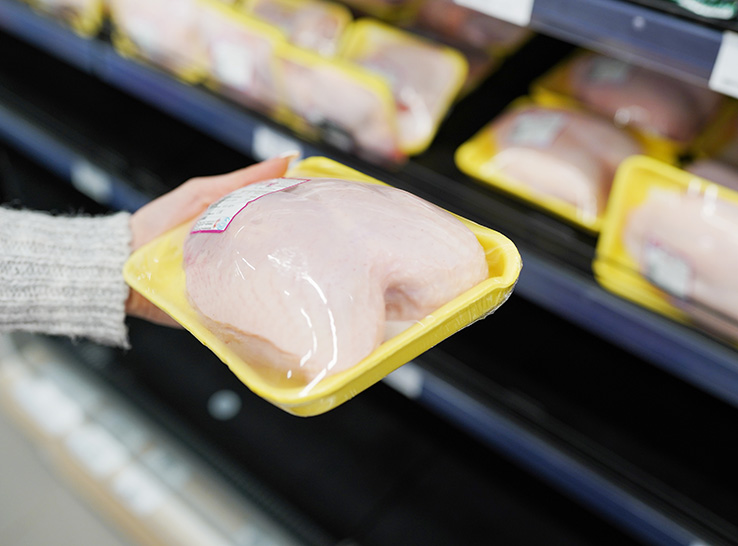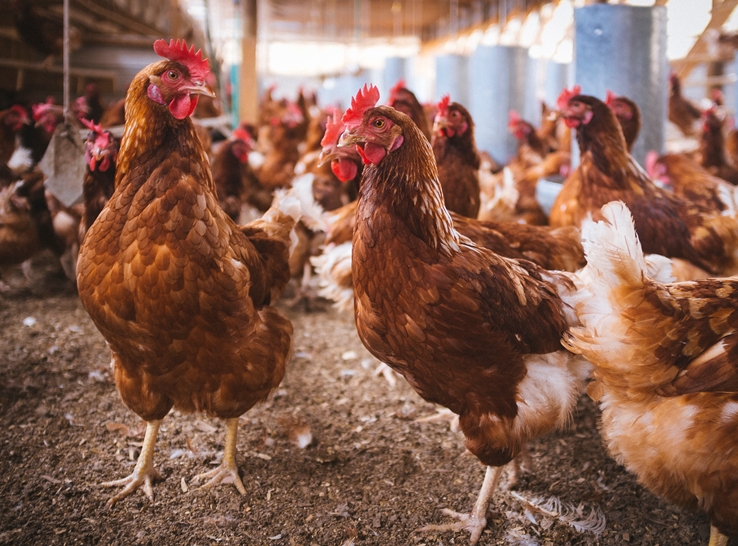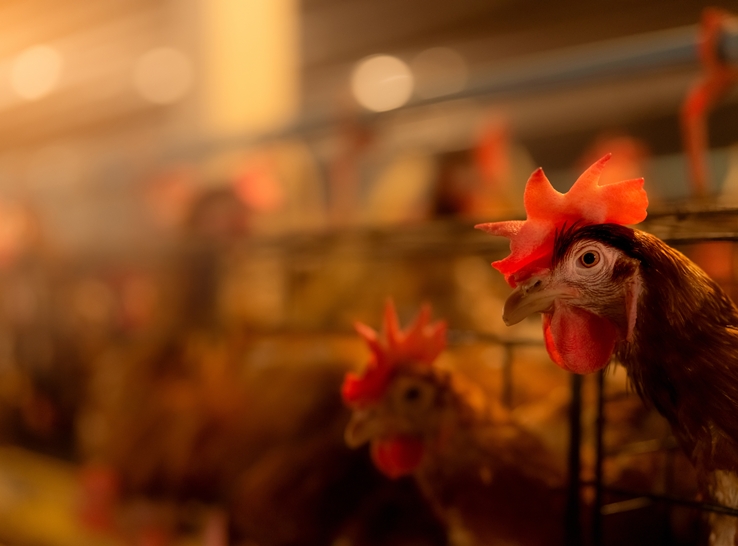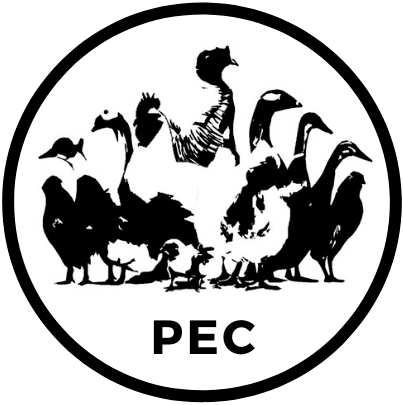By Dr. Marisa Erasmus, Purdue University
In the United States, consumers have a lot of choice when it comes to food products. Various claims and labels on the products provide consumers with information about how the animals were raised and treated during production. However, the information on animal products can sometimes be confusing. This article explains some of the common labels and claims found on animal products and describes the relationships between these labels and claims and animal welfare.
What are food labels and claims?
Food labels are tags or information on food products that provide information about the product, such as the ingredients, nutritional information and additives. Food labels typically provide facts and objective information about the product.
In addition to food labels, companies can include other types of information or voluntary claims on the products, such as how the animals were raised, what the animals were fed and whether or not the animals were raised using enhanced or specific animal welfare practices. Claims tend to be more subjective than food labels, and claims can be included on a food label. Labels and claims related to animal welfare help consumers to choose food products that align with their values and ethical views.
How are food labels and claims regulated and approved?
The regulation and inspection of food labels and claims on meat and poultry products is the responsibility of the Food Safety and Inspection Service (FSIS), an agency within the U.S. Department of Agriculture (USDA). The FSIS regulates food labels and claims by enforcing federal acts, including the Federal Meat Inspection Act, the Poultry Products Inspection Act, the Egg Products Inspection Act and the Human Methods of Slaughter Act (USDA-FSIS, 2013).
Some labels are required to be included on food packaging, such as those related to the nutritional content of the product. Other labels and claims, such as those related to how the animals were raised, are voluntary, meaning that companies can choose whether or not to include these claims on the product. However, if a product is an FSIS-regulated product, then all labels on that product need to be approved by FSIS before entering the stream of commerce.
There are different approval processes depending on the label’s information. Some labels and claims are eligible for generic approval which means that the label does not need to be submitted to the FSIS for approval. Other types of labels and claims undergo sketch approval, in which case the label and claim need to be submitted to the FSIS along with supporting documentation before these claims can be placed on the products (Caracciolo, no date). Specifically, any labels that have claims about how the animals were raised need sketch approval from the FSIS (USDA FSIS, 2019). For example, if a company claims that poultry products are from Pasture Raised poultry, then the company needs to have approval from the FSIS before including that information on the label. Furthermore, FSIS requires that the company also includes a definition or explanation of Pasture Raised on that product (FSIS, 2019).
Voluntary claims and audits
Any company can make voluntary claims about animal welfare on its products. As discussed above, the FSIS needs to approve the claims on FSIS-regulated products before use. Some claims can be verified through a third-party auditing process to ensure that the claims are accurate, but many claims can be used without undergoing third-party auditing. The company producing the product can decide what type of claim to include on the product and whether or not a claim is verified through a third party. In third-party auditing, an individual or organization who is not affiliated with either the company producing the product or the organization responsible for the claim verifies that the animals are raised in accordance with the claim’s standards. Thus, third-party auditing provides an additional way of assuring consumers that the claims on the product are accurate.
An example of third-party auditing is the American Humane Certified® seal of the American Humane Association (AHA) that can be found on certain food products. The AHA is one of several certification organizations within the U.S. that has a set of animal welfare standards that need to be met for producers to be able to use the American Humane Certified seal on their products. A third-party auditor visits farms to verify whether the producer is following the AHA’s standards before that producer can use the American Humane Certified seal. Products with the American Humane Certified seal (or another animal welfare certification) tell consumers that the animal products with that seal came from animals raised under enhanced animal welfare standards.
In general, the FSIS accepts claims that have been approved by a third-party auditor or certification organization, although documentation still needs to be provided to the FSIS (USDA FSIS, 2019).
Voluntary claims and audits
The American Humane Association is only one of several organizations that have an animal welfare assurance program and associated seals. Other food labels from animal welfare certification programs for poultry include Certified Humane Raised and Handled, Certified Animal Welfare Approved, Farm Animal Care Training and Auditing (FACTA) Humane Certified, Global Animal Partnership , Good Food Purchasing Program and Food Alliance Certified. Other companies and Industry organizations such as the National Chicken Council, National Turkey Federation, and United Egg Producers have their own animal welfare standards that may be subject to third-party certification, but may not be associated with a specific food label. Some poultry certification programs are discussed in a previous newsletter, Broiler welfare assurance programs in the United States (January, 2022).
Common claims and what they mean
Claim | Definition | Animal welfare implications |
Humanely raised Raised with care | • Defined by producer/food manufacturer and/or third-party certification organization. • For the FSIS to approve this claim (USDA FSIS, 2019): – An explanation of the claim must be provided, or the website address must be provided where the definition can be found; or – If the claim is certified by a third party, the name and website address of the third-party certifier needs to be provided. | • Animal welfare depends on the specific standards that the animals are raised under. • In general, these claims are understood to mean that the animals are raised under higher welfare standards than conventional production, but this may not be the case; welfare-related claims are not always included on products. |
100% Grass fed Grassfed Grass-fed | • After weaning, the animal consumes only grass and forage (no grain) and has access to pasture, which means that the animal was not raised on a feedlot according to the FSIS (USDA FSIS, 2019). • Animals need to have continuous access to pasture. | • Access to pasture could have beneficial impacts on animal welfare; however, many factors other than pasture access can influence welfare. • Animal welfare depends on the quality of the pasture and how the animals are managed. |
Grass finished | This is not the same as grass fed because the animal could have been fed grain earlier in life. | Animal welfare implications are not clear. |
Cage free Free range Free roaming | • Similar to humanely raised claims described above, these claims are defined by the producer/food manufacturer and/or third-party certification organization. • For the FSIS to approve this claim (USDA FSIS, 2019): – An explanation of the claim must be provided, or the website address must be provided where the definition can be found; or – If the claim is certified by a third party, the name and website address of the third-party certifier needs to be provided. | • These claims are generally understood to mean that poultry were not confined to cages while they were being raised. • Additional space may have benefits to animal welfare, but many factors can influence animal welfare, such as the quality of the environment and the management practices. |
Pasture fed Pasture grown Pasture raised Meadow raised | • These claims are defined by the producer/food manufacturer and/or third-party certification organization. • Documentation needs to be provided to the FSIS for the FSIS to approve the claims • Animals need to have continuous access to the outdoors, except during “the winter months in a northern climate” (USDA FSIS, 2019) | • Outdoor access may be beneficial for animal welfare, but the benefits depend on the quality of the outdoor environment and whether the animals use the outdoor environment. • Other factors, such as management, can influence animal welfare. |
Natural | Product is minimally processed and contains no artificial ingredients or added color according to the USDA (USDA, 2015). | In this context, the term natural has no bearing on the animal’s life and does not have implications for animal welfare. |
Raised without antibiotics Raised antibiotic free No antibiotics ever No antibiotics added | No antibiotics are given to an animal at any time during the animal’s life. | • Animal welfare implications are not always clear, except in cases where animals that are diseased need be given the appropriate treatment to alleviate suffering. • Treatment may not be withheld. |
Subtherapeutic antibiotics | Antibiotics may be given to treat illness. | Animals that are diseased should receive appropriate treatment to maintain animal welfare. |
Raised without added hormones No added hormones administered Raised without steroids | • No hormones are given to the animal during the animal’s life. • Notes that hormones are permitted to be used only for pigs, beef cattle and lambs. • There are no approved hormones for use in poultry, so if there is a claim that poultry were raised without added hormones, the producer or manufacturer also needs to add a statement that hormones are not approved for use in poultry. | Animal welfare implications are not clear. |
Hormone free | • This claim is not approved by the FSIS. • Claims that are recognized are those listed above (raised without added hormones etc.). | Animal welfare implications are not clear. |
Organic | • Any product that is labeled as organic must be certified under the United States Department of Agriculture (USDA) National Organic Program. • According to the USDA’s National Organic Program: – Poultry need to have continuous outdoor access. – Poultry need to be given organic feed. – Preventive practices are used to keep animals healthy, but animals must be treated if they are sick; if prohibited substances are used, then products from these animals cannot be sold as organic. | • Outdoor access may be beneficial for animal welfare, but the benefits depend on the quality of the outdoor environment and whether the animals use the outdoor environment. • Other factors, such as management, can influence animal welfare. |
Conclusion: consumers need to do their homework
Consumers have a choice when it comes to the products they purchase and consume, but this also means that consumers can be confused by the types and amount of information present on products. In order to make informed choices, consumers need to be aware of the various claims related to animal welfare and what they mean. Some claims may seem to be associated with animal welfare, but they are not. In addition, some claims have consistent definitions and/or are regulated by the federal government, whereas many are not. Food manufacturers need to ensure that the information on their products is accurate. However, for animal welfare-related claims, it is often up to consumers to do their own research about what the claims mean.
Further reading
Dunckel, M., J. Schweihofer and A. Kuschel. 2021. Antibiotic label claims. Michigan State University Extension. Available: https://www.canr.msu.edu/resources/antibiotic-label-claims
United States Department of Agriculture (USDA). 2023. USDA launches effort to strengthen substantiation of animal-raising claims. Available: USDA Launches Effort to Strengthen Substantiation of Animal-Raising Claims | USDA
United States Department of Agriculture Agricultural Marketing Service (USDA AMS). N.d. About the Organic Standards. Available: https://www.ams.usda.gov/grades-standards/organic-standards#Livestock
United States Department of Agriculture Agricultural Marketing Service (USDA AMS). N.d. Labeling organic products. Available: https://www.ams.usda.gov/rules-regulations/organic/labeling#what%20requirements
United States Department of Agriculture Agricultural Marketing Service (USDA AMS). N.d. National Organic Program. Available: https://www.ams.usda.gov/about-ams/programs-offices/national-organic-program
United States Department of Agriculture Food Safety and Inspection Service (USDA FSIS). 2019. Food Safety and Inspection Service labeling guideline on documentation needed to substantiate animal raising claims for label submissions. Available: https://www.fsis.usda.gov/sites/default/files/media_file/2021- 02/RaisingClaims.pdf
United States Department of Agriculture Food Safety and Inspection Service (USDA FSIS). 2021. Animal raising claims labeling guidelines update. Available: https://www.fsis.usda.gov/sites/default/files/media_file/2021-09/Animal-Raising-Claims-labeling-and-Non- GMO-slides-2021-09-01.pdf
To view the full Poultry Extension Collaborative newsletter, Vol 40, click here.
Editor’s note: Content on Modern Poultry’s Industry Insights pages is provided and/or commissioned by our sponsors, who assume full responsibility for its accuracy and compliance.

